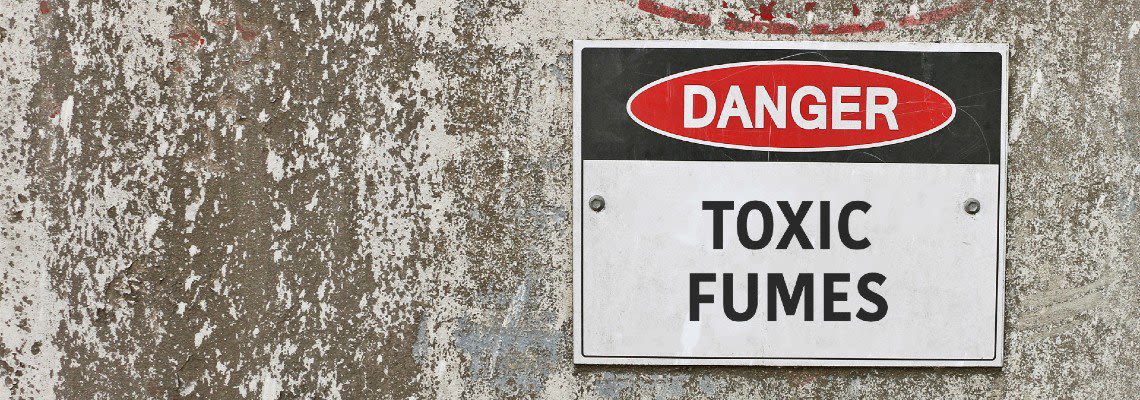
WHAT TO DO ABOUT TOXIC EXPOSURE
The Centers for Disease Control and Prevention (CDC) estimates that 13 million Americans are potentially at risk for chemical exposure at work.
Even in environments where chemicals and toxic substances are not used in the course of business, chemical exposure can arise from everyday objects like thermostats, old paint, and outdated plumbing.
If you’re in or around Houston, South Houston, or Pasadena, Texas, and you believe you’ve been injured by chemicals or toxic substances at work, don’t hesitate to call me — Jose A. Orihuela, Attorney at Law. I have pursued countless personal injury claims for clients just like you. I will fight for your just compensation.
LAWS PROTECTING AGAINST TOXIC EXPOSURE
Federal agencies set standards and establish limits regarding chemicals and toxic exposure in work environments. In addition to the CDC, the Occupational Safety and Health Administration (OSHA) and the Environmental Protection Agency (EPA) are deeply involved in creating and maintaining safe work environments.
In addition to its “general duty clause” requiring all employers and places of employment to use all means to maintain “safe and healthy” work environments, OSHA has established standards regarding the use and safeguarding of various chemicals. It has also established permissible exposure limits (PELs) for some 500 substances. Most of the PELs are configured around exposure during an eight-hour workday.
The EPA is the enforcement agency for the Toxic Control Substances Act (TCSA) of 1976, which was updated in 2016. The TCSA provides the EPA with authority to mandate reporting, record-keeping, and testing requirements and establish restrictions relating to chemical substances and/or mixtures.
The CDC administers the National Chemical and Radiological Surveillance Program to monitor outbreaks and exposure threats and inform the public.
COMMON CHEMICALS FOUND IN WORKPLACES
Chemicals most commonly found in the workplace include:
Aluminum
Asbestos
Benzene
Chromium
Lead
Mercury
Petroleum
Pesticides
Silica
Acids
As OSHA notes, lead is an ingredient in old paint, and thermostats can contain mercury. Chromium may also be present in paint.
COMMON EXPOSURES AND INJURIES
Chemicals can enter the body at work through four means:
Inhalation — This is the most common pathway — breathing in a chemical
Skin contact — Some chemicals can not only damage the skin through contact but continue on into the bloodstream
Ingestion — Workplace chemicals can be accidentally swallowed if they contaminate food, drink, or even cigarettes
Injection — A sharp object such as a needle punctures the skin and injects a chemical into the bloodstream
The most common injuries resulting from these entry systems are burns, rashes, throat or lung injuries, and even nerve and neurological injuries in extreme cases.
WHAT TO DO IF INJURED BY TOXIC EXPOSURE
Many Texas employers will purchase workers’ compensation insurance, though Texas is the only state that doesn’t require such coverage. This insurance basically relieves the employer of fault — and lawsuits — for workplace injuries and illnesses, though exceptions do exist.
In a business covered by workers’ compensation insurance, you need to immediately report any injury or illness — chemical or otherwise — to your employer. Workers’ compensation insurance will cover your medical expenses and lost wages (in some circumstances).
If your employer does not carry workers’ compensation, then you are free to pursue a personal injury lawsuit that goes beyond basic expenses to include pain and suffering. In this case, you must show fault, or negligence, on the part of the employer who had a “duty of care” to maintain your safety and health.
Three other potential avenues for personal injury claims exist even when the employer does carry workers’ compensation:
The injury was intentional — Your employer throws something at you causing harm or trips you on purpose and you’re injured.
Defective products are to blame — If machinery malfunctions, then both the employer and manufacturer can face liability if they failed to warn you, make repairs, or take precautionary measures.
Exposure to toxic or illegal substances — Here the employer must have known of your exposure and did nothing to minimize it.
There is also the possibility of a lawsuit against a third party. If the manufacturer of a chemical used at your workplace, for instance, failed to provide proper handling and usage instructions, or the packaging was defective, you might have a third-party negligence claim against that manufacturer.
WHY YOU SHOULD WORK WITH AN ATTORNEY
Note that toxic or chemical exposure can often slip through the no-fault protection of your employer’s workers’ compensation insurance. This provides for a personal injury lawsuit that offers more comprehensive compensation than does workers’ compensation.
If you’ve suffered a toxic or chemical exposure injury, and you’re in Houston, Pasadena, or surrounding areas, including Webster, Friendswood, Kemah, Seabrook, and others, call me — Jose Orihuela, Attorney at Law — for a free consultation. Let me review your situation with you and arrive at the best possible legal strategy going forward.
